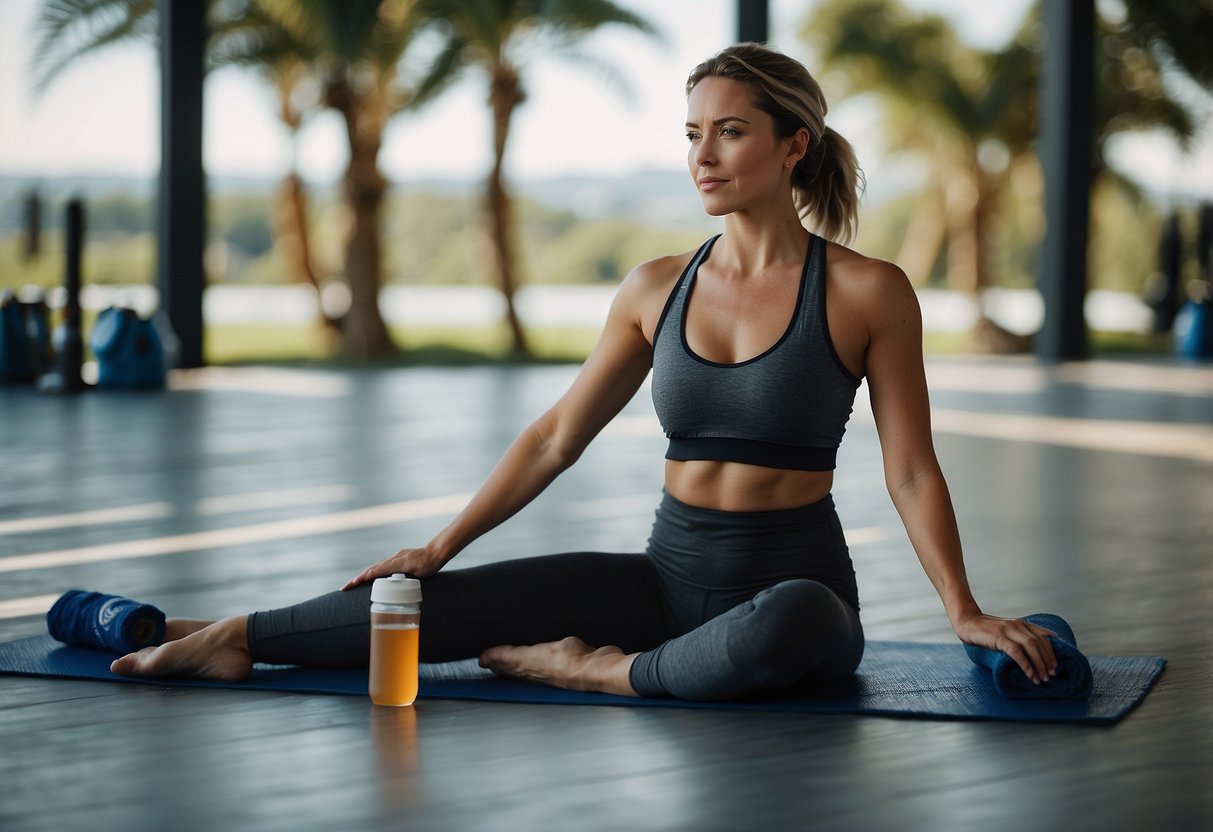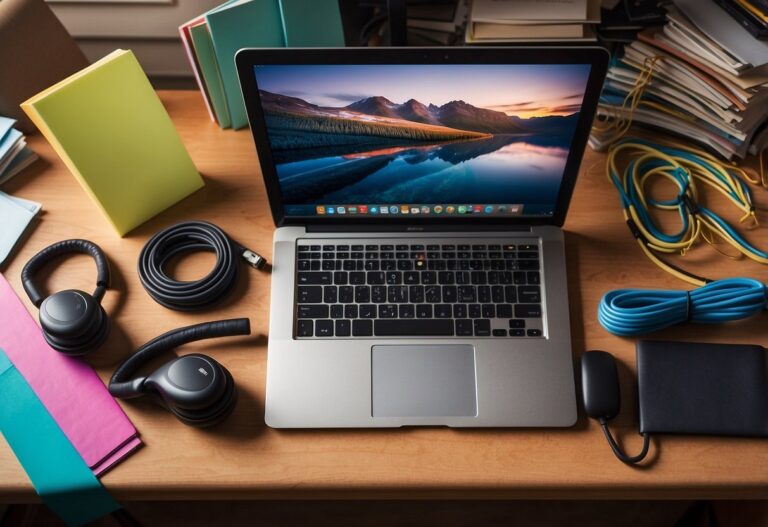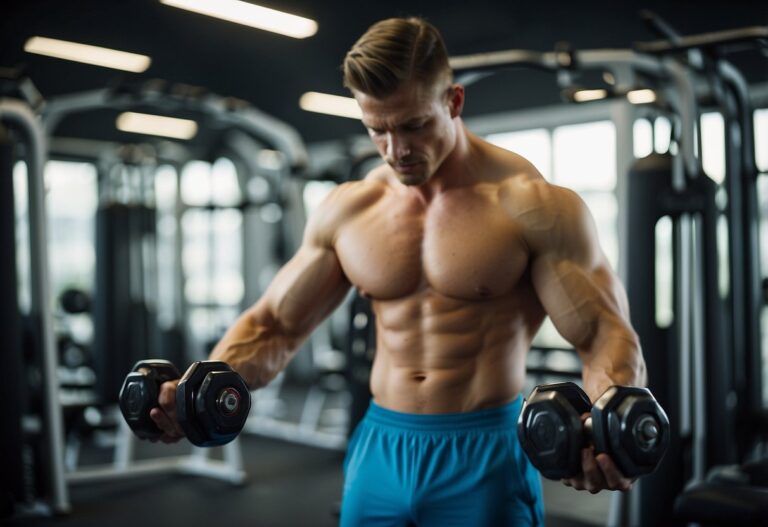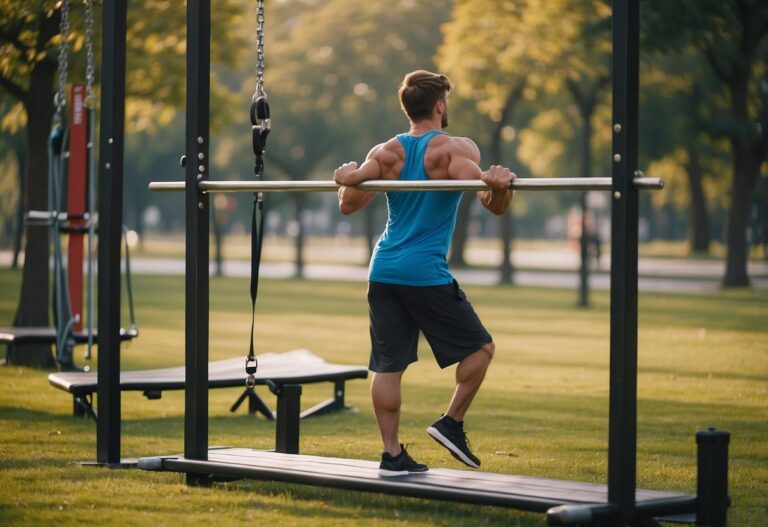Exercising during your period might not sound fun, but it can actually be very helpful. You might be surprised to learn that workouts can ease cramps and boost your mood. Many women find that staying active helps them feel better both physically and mentally during their menstrual cycle.

You may have questions about what types of exercises are best and if there are any to avoid. This article will guide you with some useful tips and advice for working out on your period. Whether you’re dealing with cramps, low energy, or just feeling off, these tips can help you maintain your fitness routine in a way that works best for you.
Stay Hydrated
Drinking enough water is important when you’re on your period. You might feel tired or more sluggish, and water can help fight that.
It’s recommended to drink about eight glasses of water a day. Pay attention to how much you sweat during your workouts, and drink more if needed.
Avoid caffeine and carbonated drinks as they can make bloating worse. Instead, stick to water or herbal teas which can be more soothing.
Your body is working hard, so give it the hydration it needs to perform well.
Exercise at a Moderate Pace
When you’re on your period, it’s important to consider exercising at a moderate pace. Moderate exercise can help ease symptoms like cramps and fatigue. You might find activities like swimming relaxing, as it’s gentle on the body and can help reduce tension.
You can also try barbell squats, which target your quadriceps, glutes, and core. Focus on your form rather than lifting heavy weights when you’re feeling low on energy. This can still provide a good workout without overexerting yourself.
Listening to your body is key. If you feel up to it, a light jog or brisk walk can also be beneficial. It doesn’t have to be strenuous; the goal is to keep moving while staying comfortable.
Yoga Poses like Child’s Pose
Child’s Pose (Balasana) is a fantastic pose during your period. It helps to gently stretch your lower back and relieve tension in the pelvic area. This can reduce menstrual cramps significantly.
Kneel on the floor with your big toes touching and your knees apart. Slowly sit back onto your heels and stretch your arms forward on the floor.
For added comfort, place a cushion or blanket under your head. This small adjustment can support your neck and make the pose even more relaxing.
Practising Child’s Pose regularly can help you manage period pain better, promoting a sense of calm and relaxation.
Use a Heating Pad or Hot Water Bottle

Applying heat to your abdomen can do wonders when you’re on your period. Using a heating pad or hot water bottle helps relax your muscles and soothe cramping.
You can place the heating pad or hot water bottle directly on your lower belly. Make sure the temperature is comfortable; this can give you some quick relief.
Many people find that heat therapy is a natural and effective way to manage period pain. Plus, it’s simple to use at home. Have you tried this method before? If not, it might be worth giving it a go.
Wear Comfortable Workout Clothing

Choosing the right clothing for a workout on your period can make a huge difference. If your usual gear feels tight or uncomfortable, opt for something more relaxed. It’s common to experience a bit of bloating, so comfort is key.
Consider wearing dark pants or a longer shirt to help you feel more at ease. Period-proof workout clothes can also offer extra security against leaks. For instance, using a combination of period-proof clothing with a menstrual cup or tampon can be very effective.
Remember to pick fabrics that are moisture-wicking and breathable to stay cool and dry. Avoid light-colored clothing if you’re concerned about potential leaks. This small change can make your workouts much more pleasant and worry-free.
Try Light Stretching
When experiencing period cramps or general discomfort, light stretching can make a big difference. It helps in easing muscle tension and improving circulation.
Consider doing simple stretches like touching your toes gently or stretching your arms over your head. These movements can relieve tightness in your back and shoulders.
Another effective stretch involves lying on your back and bringing your knees to your chest. Hold this position for a few breaths to relax your lower back.
Light stretching doesn’t need to be intense. Just a few minutes can help you feel much better.
Listen to Your Body

When you’re on your period, it’s important to listen to your body. If you’re feeling fatigued, consider swapping intense workouts for gentler activities like yoga or light walking. These can help reduce cramps and bloating.
If you feel energetic, go ahead with a more vigorous workout. Experts suggest exercises like barbell squats that target multiple muscle groups. Remember to stay hydrated and rest if needed. Always adjust your routine based on how you feel to keep your workouts safe and effective.
Prioritise Rest if Needed

When you’re on your period, listening to your body is crucial. If you feel exhausted or in pain, give yourself permission to rest. Skipping a workout now and then won’t derail your fitness goals.
Recovery days can be just as important as exercise. You might opt for light activities like yoga or stretching, which help ease cramps and reduce stress. If you’re into cardio, a gentle walk can be beneficial too.
Sometimes, your body simply needs a bit of extra care. Consider activities that promote relaxation, such as reading or having a warm bath. Taking time for yourself can improve both your mood and your overall well-being during this time.
Find what works best for you and remember that self-care is essential. Listen to your body and adjust your routine accordingly.
Maintain a Healthy Diet
Eating well during your period helps a lot. A healthy diet includes plenty of vegetables like carrots and spinach. Aim for five servings of vegetables daily.
Fruits are also important. Try to eat two servings of fruit each day. Bananas and apples are good choices.
Protein is key. Include foods like legumes, eggs, and fish in your meals. Fish is great for its omega-3 content, which can reduce inflammation.
Don’t forget about wholegrains. Bread, oats, and brown rice are good sources. Wholegrains provide energy and keep you full longer.
Drinking plenty of water helps, too. Staying hydrated can reduce bloating and help you feel better overall.
Keep a Consistent Exercise Routine
When you’re on your period, keeping a consistent exercise routine can significantly help. Regular workouts can actually reduce period cramps and mood swings.
If you’re not feeling up to intense exercise, opt for lighter activities. Yoga and stretching can be great alternatives.
Sometimes, simply focusing on form instead of intensity makes all the difference. Even a short 20-minute session can help you feel better.
Consistency is key. Try to stick to your routine, even if you need to adjust the intensity.
Understanding Menstrual Cycle and Exercise
Periods can affect how you feel and perform during workouts. Yet, exercising during your cycle can also bring some surprising benefits.
How Periods Affect Physical Performance
During your period, you might notice changes in your energy levels and physical performance. Some people feel more tired or experience cramps and discomfort, which can make working out harder. Your body also goes through hormonal changes, like fluctuating levels of oestrogen and progesterone. These changes can influence your strength, stamina, and motivation.
For instance, in the follicular phase (starting from the first day of your period to ovulation), you might feel more energetic and stronger. On the other hand, the luteal phase (after ovulation until the start of your next period) might make you feel more sluggish and less motivated to exercise.
Listen to your body and adjust your workout intensity. If you feel fatigued, opt for gentler activities like yoga or walking. Meanwhile, take advantage of high-energy days with more intense workouts.
Benefits of Exercising During Menstruation
Exercising during your period can offer several benefits. Firstly, physical activity can help to reduce menstrual cramps. Activities like yoga and stretching are particularly effective. Endorphins released during exercise also act as natural pain relievers, boosting your mood and reducing feelings of anxiety and depression.
Moreover, working out can help regulate your cycle and reduce premenstrual syndrome (PMS) symptoms. Staying active improves blood circulation, which can ease bloating and reduce water retention.
For those with heavy flows, be sure to change protection before working out to stay comfortable. Exercising can boost your confidence and help you feel more in control during this time. If you usually feel low energy during your period, don’t push yourself too hard; adjust your routine to how you’re feeling.
Optimal Workouts During Your Period
When it’s that time of the month, certain workouts can help manage symptoms and improve your overall sense of well-being. From light cardio routines to strength training and yoga, here are some tips on how to keep moving comfortably during your period.
Light Cardio and Its Benefits
Light cardio like walking, cycling, or low-intensity jogging can be highly beneficial when you’re on your period. Simple activities such as walking can help increase your heart rate without putting too much strain on your body, making it easier to manage symptoms like cramps and fatigue.
Cardio helps release endorphins, which are natural painkillers and mood boosters. A light walk or gentle cycle can also help reduce bloating and improve digestion. Try to aim for 20-30 minutes of light cardio to enjoy these benefits without overexerting yourself.
Strength Training Considerations
Strength training can still be part of your routine during your period, but with some adjustments. Focus on exercises that target large muscle groups, such as barbell squats for your quadriceps and glutes. Keep the weights manageable and pay attention to your form instead of trying to lift heavier than usual.
Compound exercises like deadlifts and lunges can be effective, but it’s crucial to listen to your body. Take longer rest periods if needed and avoid pushing through intense pain or fatigue. Consistency in lighter strength training can still help you maintain muscle tone and strength without putting undue stress on your body during this time.
Yoga and Stretching Techniques
Yoga and stretching are excellent for relieving period discomfort. Practising gentle poses can help alleviate cramps, reduce stress, and improve your mood. Poses like child’s pose, bridge pose, and cat-cow are particularly effective for stretching your back and abdomen, providing relief from cramps and back pain.
Specific stretching routines, such as the kneeling hip stretch, focus on loosening tight muscles and promoting relaxation. Incorporate deep breathing to enhance the calming effects of these exercises. Aim for a 15-20 minute session to help reduce tension and promote overall wellness.
Tips for Exercising Comfortably
When working out during your period, comfort is key. Pay attention to your clothing and hydration to stay at your best.
Choosing the Right Workout Gear
Wearing comfortable workout clothes can make a big difference. Opt for breathable fabrics like cotton or moisture-wicking materials. These help keep sweat away and prevent chafing. Make sure your clothes allow for freedom of movement. Avoid tight-fitting gear that constricts your abdomen, as this could increase discomfort.
Sports bras are particularly important. Look for one with good support to reduce any additional strain on your back and shoulders. If you feel self-conscious about leaks, consider using dark-coloured clothing or layering. Items like menstrual cups or period-specific workout clothing can also offer added protection and peace of mind.
Staying Hydrated and Nourished
Drinking water is always crucial during exercise, but it becomes even more important during your period. Staying hydrated helps prevent cramps and maintain energy levels. Keep a water bottle with you and sip regularly. Aim to drink at least eight glasses of water a day.
Eating the right foods can also help. Focus on nourishing your body with light, balanced meals. Foods rich in iron, like spinach and lean meats, can help combat period-related fatigue. Snacks like nuts, seeds, and fruits provide quick energy without causing bloating. Avoid caffeine and sugary treats, which can cause spikes and crashes in energy levels.
Listen to your body’s needs. If you feel more tired than usual, consider eating smaller, frequent meals to keep your energy steady.







